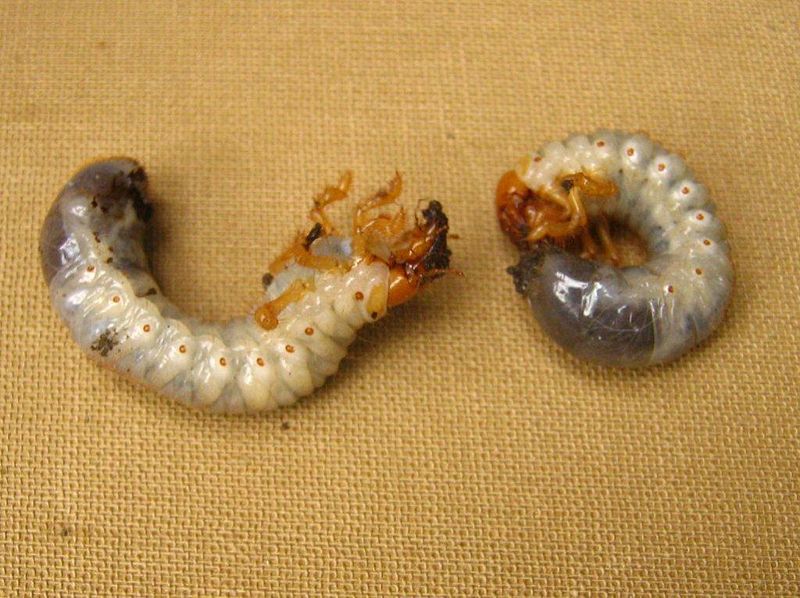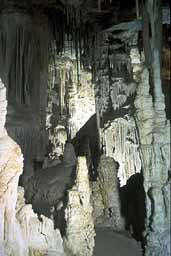Alabama Cave Shrimp - BIO203
I'll Make Love To You
Not much is
known about the Alabama Cave Shrimp life cycle because they have
never been observed for a full year, making it
difficult to draw conclusions about the yearly life cycle of
this organism (McGregor et al. 2005; Bibb et al. 2006).
 However,
like most animals, they undergo a gametic life cycle, meaning
they spend most of their lives in the diploid (2N) stage except
as gametes, when they exist in the haploid (1N) stage. The
greatest amount of females are pregnant (also referred to as
gravid) between May and August, but many gravid females have
also been observed in September and October (McGregor et al.
2005).
However,
like most animals, they undergo a gametic life cycle, meaning
they spend most of their lives in the diploid (2N) stage except
as gametes, when they exist in the haploid (1N) stage. The
greatest amount of females are pregnant (also referred to as
gravid) between May and August, but many gravid females have
also been observed in September and October (McGregor et al.
2005).
In another study, gravid Alabama Cave
Shrimp were observed from July to January and each one carried
anywhere from four to thirty eggs (Bibb et al. 2006). The
Palaemonids in general have been found to not have a very strong
correlation between the size of the female and its fecundity
(Meireles 2013). Researchers hypothesize that the eggs mature in
the fall and hatch in the winter (Bibb et al. 2006). It is also
thought that Alabama Cave Shrimp need at least one full growing
season to reach sexual maturity, although studies are
still being done regarding their larval development (Bibb et al.
2006).
It has been discovered through a
study in Brazil that freshwater decapods usually have shorter
larval stages than other crustaceans like the
Cryptotermes cavifrons (Meireles 2013).
 Most
marine organisms have a very complicated larval development (Guido
et al. 1995).
However, organisms that live in freshwater only, like
Palaemonids, usually have fewer and smaller eggs than their
saltwater counterparts (Guido et al. 1995). The larval stages also tend to be
shorter and much less complex (Guido et al. 1995).
Most
marine organisms have a very complicated larval development (Guido
et al. 1995).
However, organisms that live in freshwater only, like
Palaemonids, usually have fewer and smaller eggs than their
saltwater counterparts (Guido et al. 1995). The larval stages also tend to be
shorter and much less complex (Guido et al. 1995).
Alabama Cave
Shrimp also demonstrate sexual dimorphism (Bibb et al. 2006;
Jacobson and Hartfield 1997). The sex ratio of male to female
observed when scientists observed them was usually one to one
(Bibb et al. 2006). As far as morphological differences, females
were an average of 1.2 mm longer in total length than males, and
males had a 4.2% longer rostrum than the females (the rostrum
refers to the antennae-like projection from the head of the
shrimp) (Bibb et al. 2006).
The life span
of the Alabama Cave Shrimp is currently unknown, but its closest
relative, the Kentucky Cave Shrimp (Palaemonias ganteri) lives
an average of 10 to 15 years (Bibb et al. 2006; Cooper and
Cooper 2010).
 Since the Alabama Cave Shrimp have never been
viewed in February, March, or April, it is very difficult to
determine the life cycles that occur during these months, as
well as the behaviors of the shrimp (McGregor et al. 2005;
Cooper and Cooper 2010). However, some of the shrimp’s behaviors
can be explained by those of most organisms living in dark cave
environments. They tend to have more developed characteristics
that contribute to their ability to understand their
surroundings without seeing it with their eyes (Klaus et al.
2013). Cave organisms generally also have additional mechanisms
(other than visual) for locating nutrients and resources, and
communicating with other organisms in that environment (Klaus et
al. 2013).
Since the Alabama Cave Shrimp have never been
viewed in February, March, or April, it is very difficult to
determine the life cycles that occur during these months, as
well as the behaviors of the shrimp (McGregor et al. 2005;
Cooper and Cooper 2010). However, some of the shrimp’s behaviors
can be explained by those of most organisms living in dark cave
environments. They tend to have more developed characteristics
that contribute to their ability to understand their
surroundings without seeing it with their eyes (Klaus et al.
2013). Cave organisms generally also have additional mechanisms
(other than visual) for locating nutrients and resources, and
communicating with other organisms in that environment (Klaus et
al. 2013).
Continue on to learn more about Alabama Cave Shrimp's Interactions with other organisms.